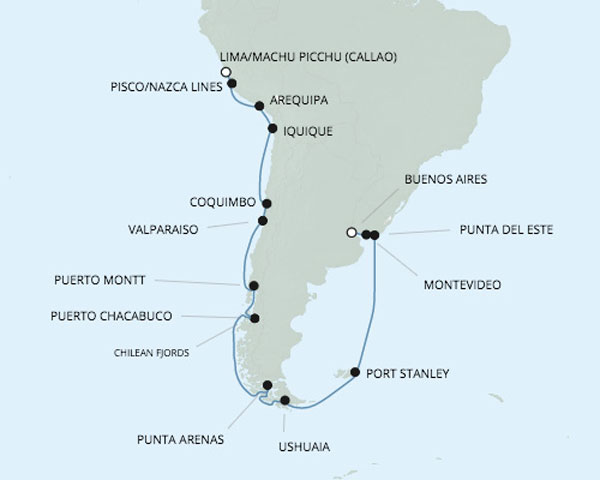
Machu Picchu, Cruise around Cape Horn, and Iguassu Falls
Mike and Judy Henderson
January 31 to March 1, 2017
I'm going to leave the map at the beginning of each page to help you visualize where we are.

+++++++++++++++++++++++++++++++++++++++++++++
2/2/2017 (Thursday) (continued) After our visit to the church, we went to a "ruins" site just above Cusco - Saqsaywaman. One of the interesting aspects of this Incan site is the stone work - very large stones were fitted together with great precision. The lower walls of the site are laid in a zigzag fashion, probably for resisting the earthquakes that are common in this area. Here's Judy at the entrance.
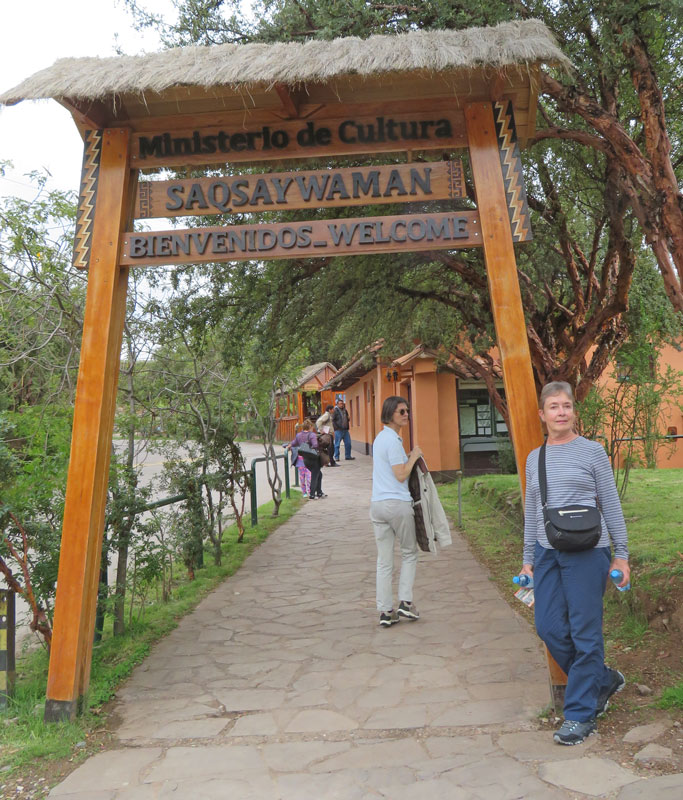
And a wide view of the site.
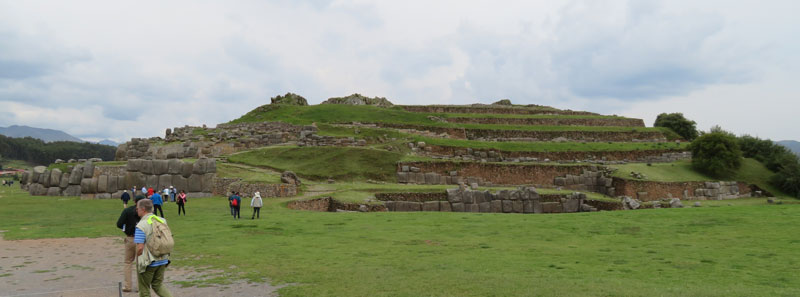
This closer view of the stones will give you some sense of their size and the precision of the fitting.
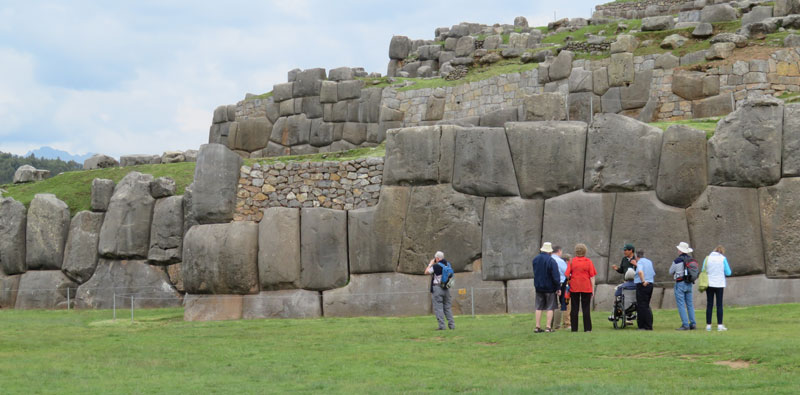
The walls are set in a zigzag fashion, probably to help stabilize the walls during earthquakes, which are common in this area.
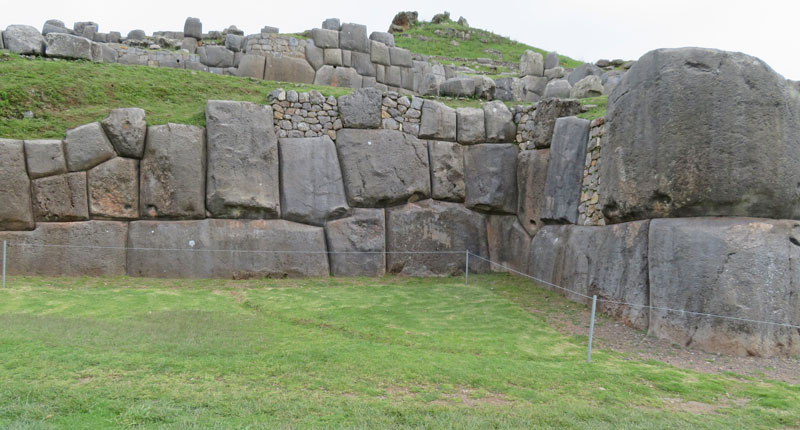
According to Wikipedia this was used as a fortress but when looking at the ruins, it does not appear that it would provide much protection. The walls are low and could be easily breached by an army with scaling ladders. There's no sign of a moat or other obstacle to prevent an invading army from reaching the walls. Archeologists believe there were towers behind the walls, and those may have been used to fire arrows at invaders. Of course, we can only see the ruins so there was probably a lot more to it when it was in use.
Our guide could not provide any information on how the people moved the stone or the techniques used to fit them together but the Wikipedia article I pointed to describes some techniques that were believed to be used. One thing I found interesting was the discussion of how labor was provided to build a structure such as this - groups from villages provided a certain number of days of "public works" labor as tax. From what I know, this is the same technique used for labor on the Egyptian pyramids.
They graze some alpacas in the area to keep the grass trimmed. Here's a mom and her baby - very cute.
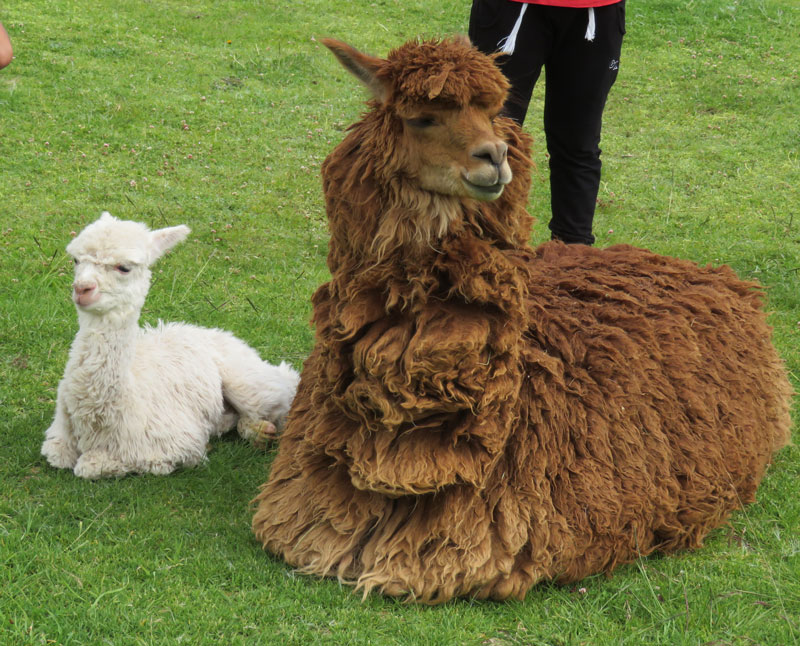
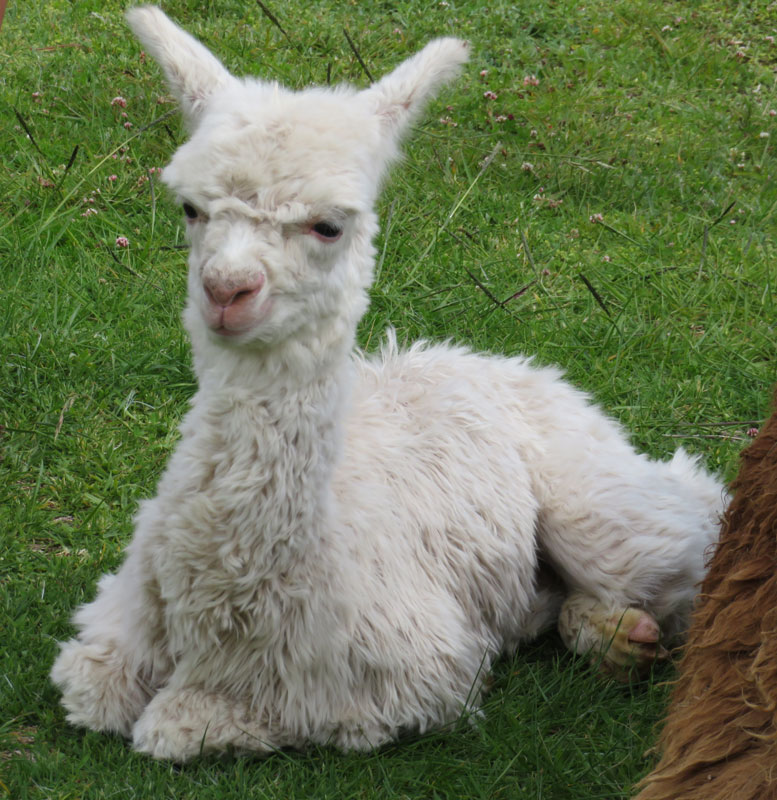
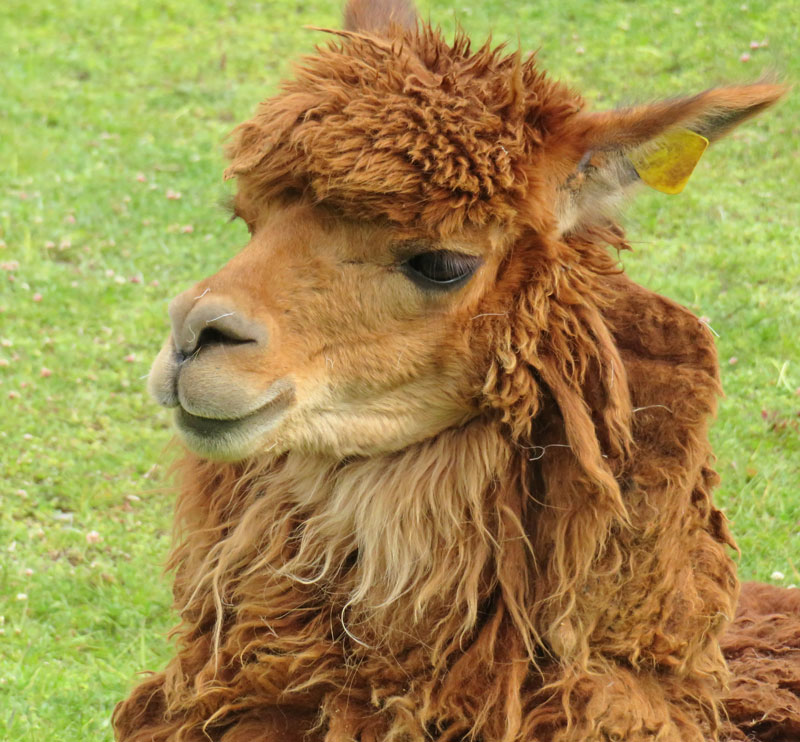
Speaking of alpacas, we saw many of them with people in native dress. I'm not sure if they were there to attract tourists (pictures for money) or to provide local color.
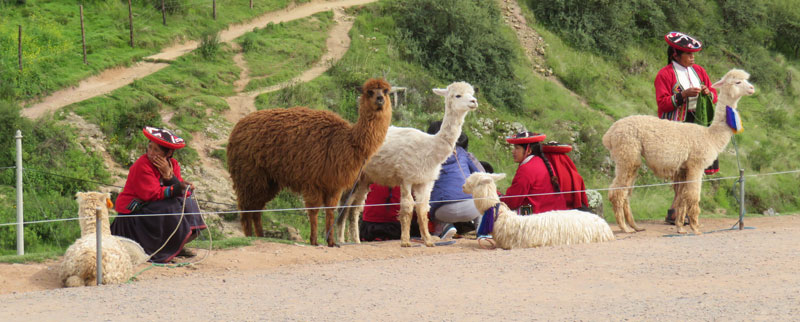
Next we went to Qorikancha, which was the most important temple in the Incan empire. After the Spanish conquest, the temple was demolished and a church was built on the site, incorporating some of the original Inca walls into its construction.
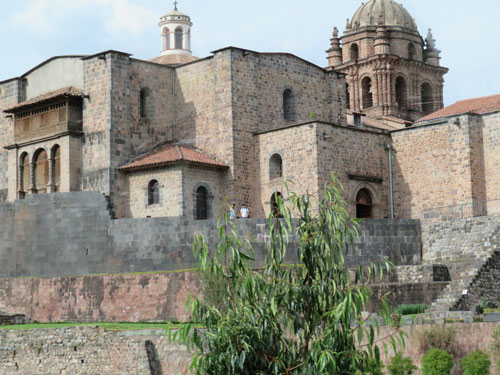
After that, we went to our hotel in Cusco - a J.W. Marriott.
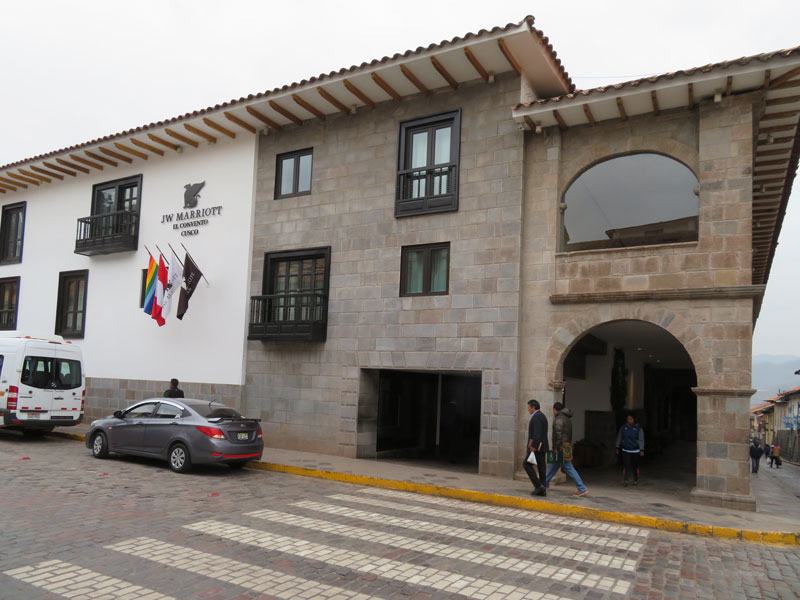
The hotel was built on the site of an old convent and it incorporated some of the original look into its design. Here's the interior courtyard.
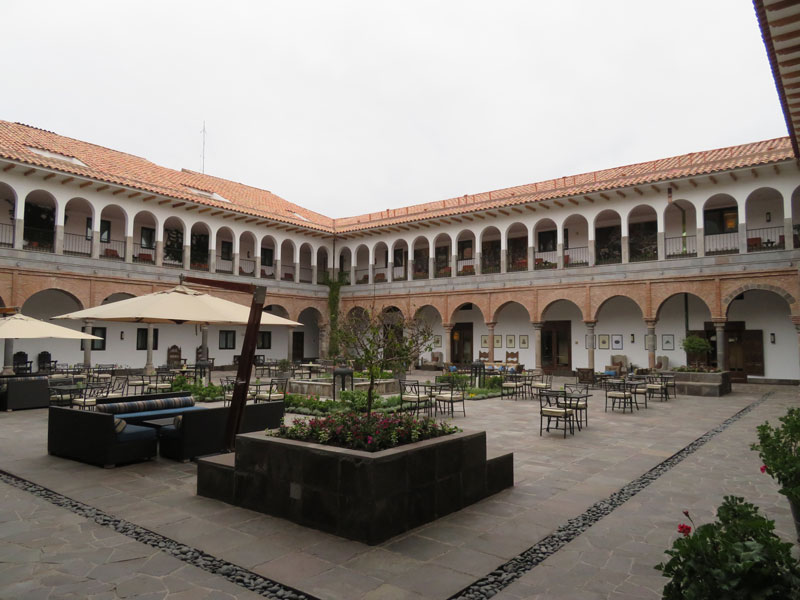
It's a very elegant hotel, and our room was large and very nice.
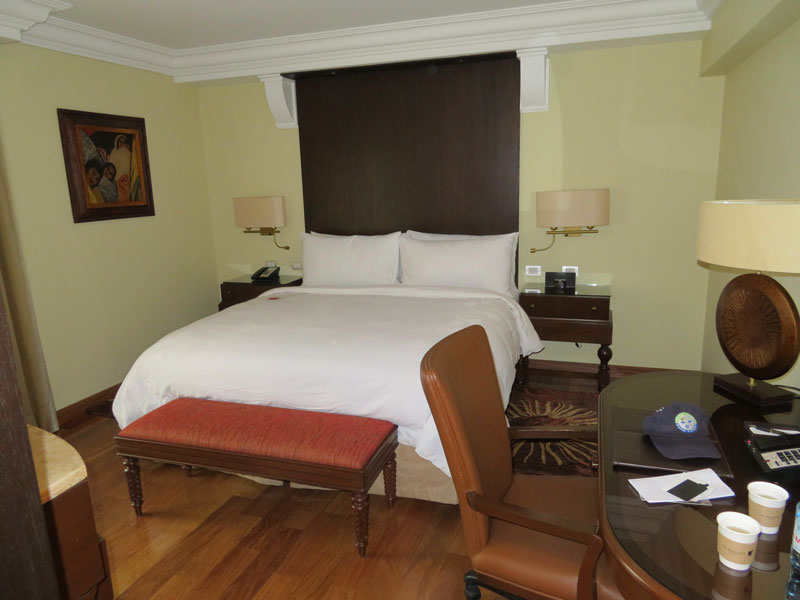
We had a small dinner that evening in the hotel.
+++++++++++++++++++++++++++++++++++++++++++++++++++++++
2/3/2017 (Friday) Today we go to Machu Picchu. We had another early start but didn't have to leave the hotel until about 8am. Here's our group gathering that morning.
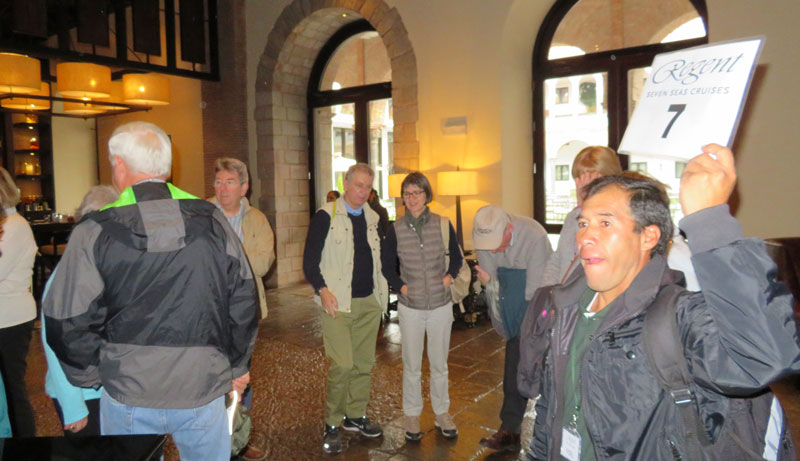
The trip to Machu Picchu begins with a two hour bus ride to Ollantaytambo, then an hour and a half train ride to Aguas Calientes, then another bus ride from the train, up the mountain, to Machu Picchu.
This bus took us to Ollantaytambo.
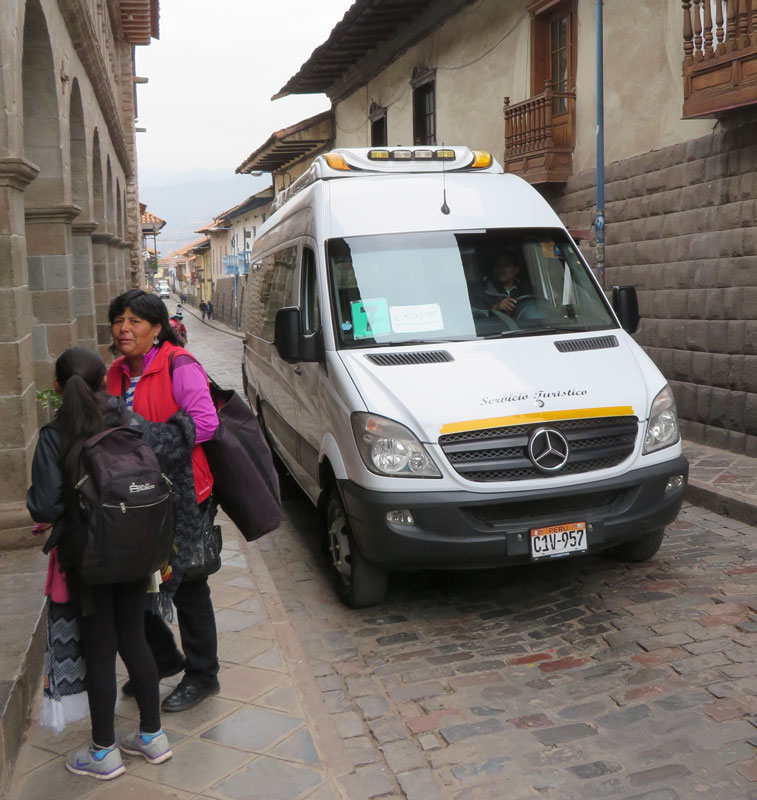
The drive took us through some of the more rural areas outside the city of Cusco, and over the mountains (peak altitude on the trip was a bit over 12,000 feet). One thing I noticed was the number of buildings under construction. Our guide explained that there are no restrictions (or permits) on building construction and families often continue to build onto their homes over time. They do so as they have the money, so many buildings look like they're under construction, although nothing is going on at the time.
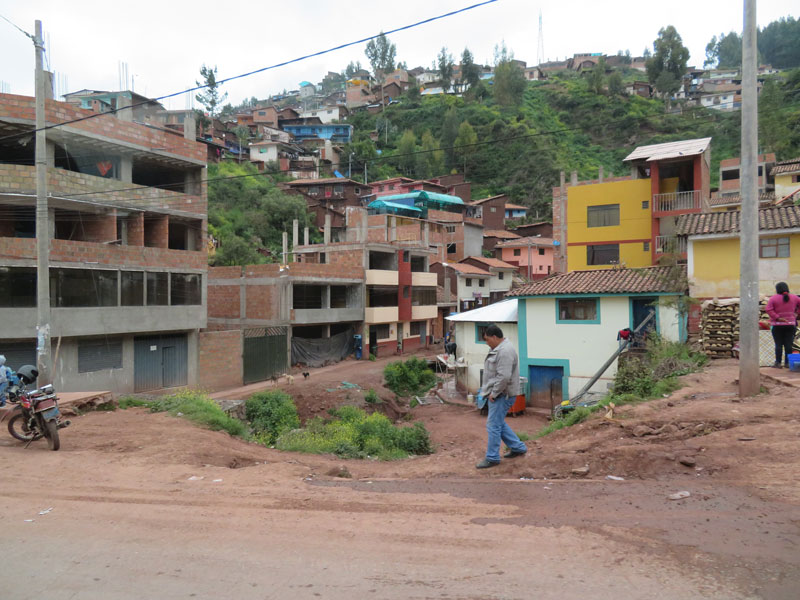
Along the route they stopped the buses for a "pit stop" and a chance to view the scenery, our first glimpse of the Sacred Valley of the Incas.
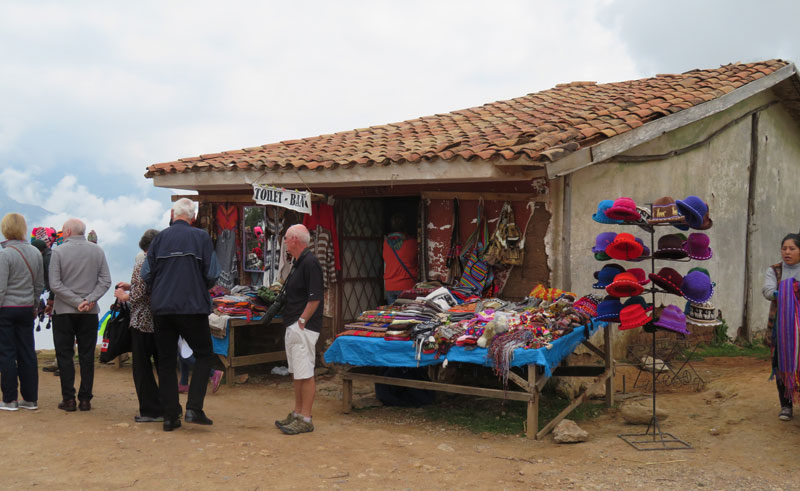
Many vendors had set up around the area selling scarves, sweaters, and other items made from alpaca. These young girls were attempting to get tourists to pose with them and their alpacas for money. They're cute kids, aren't they? Notice the dressy alpaca, too.
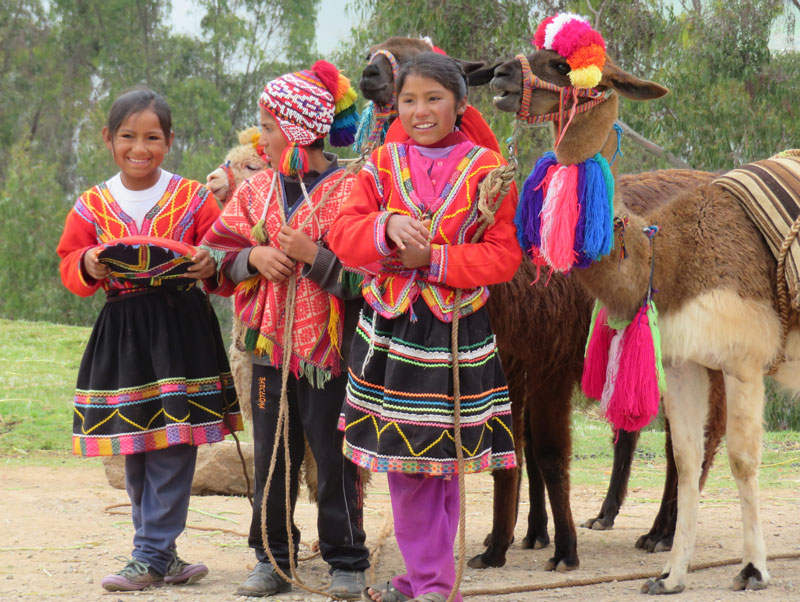
Judy mentioned that many of the girls had ruddy spots on their cheeks and that it may be related to the altitude and cold weather. I took this close-up of one of the girls selling alpaca merchandise to show you what she meant.
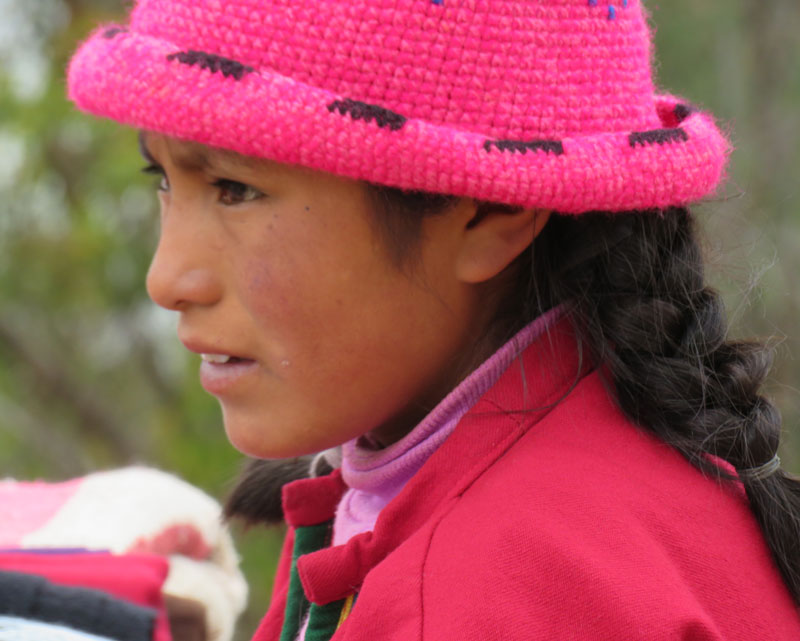
Eventually we reached Ollantaytambo and the train station.
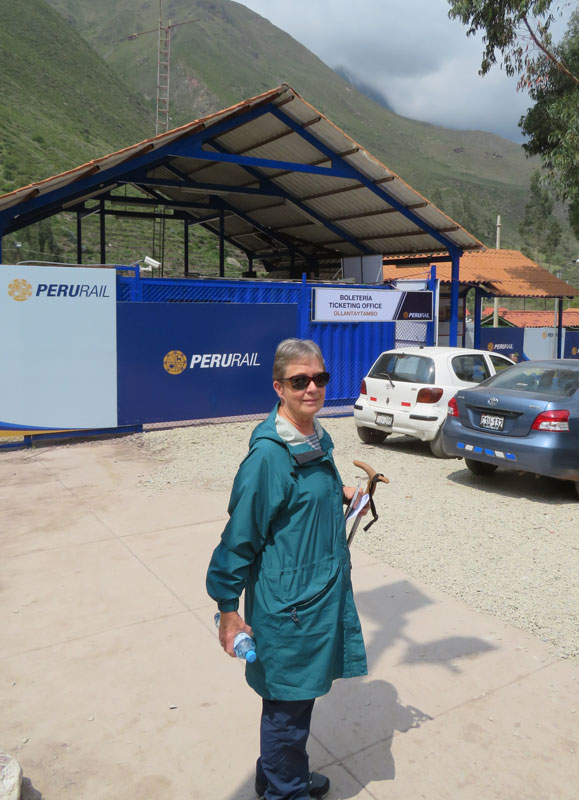
Here's the best I could do getting a picture of the train, the Vistadome.
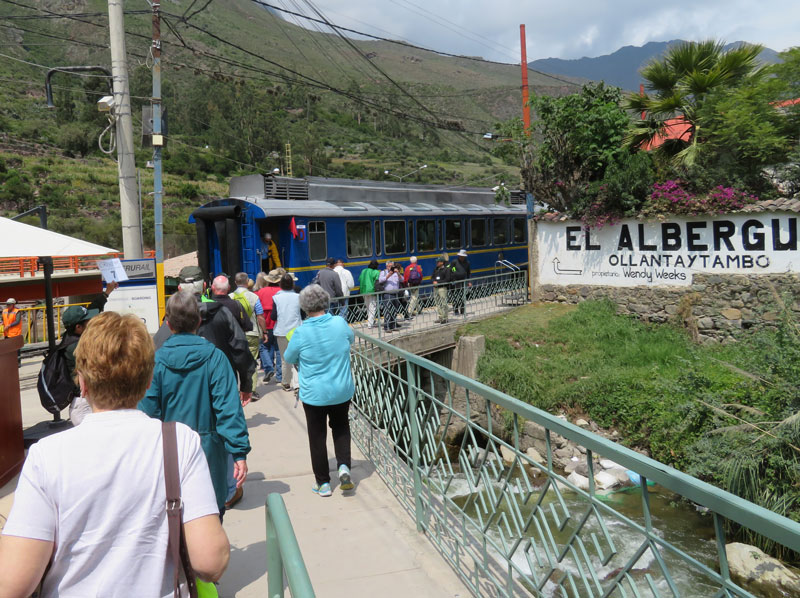
And the interior of the train.
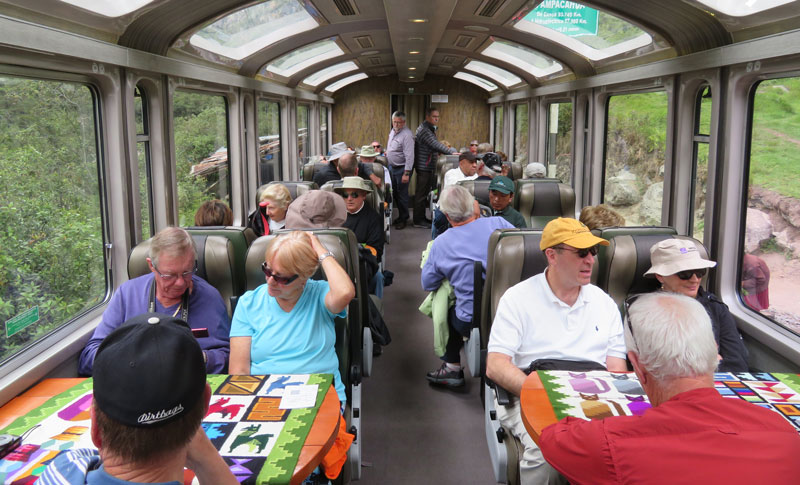
The train follows the Urubamba River to Aguas Calientes. The canyon of the Urubamba is very deep with steep sides. It was quite some scenery.
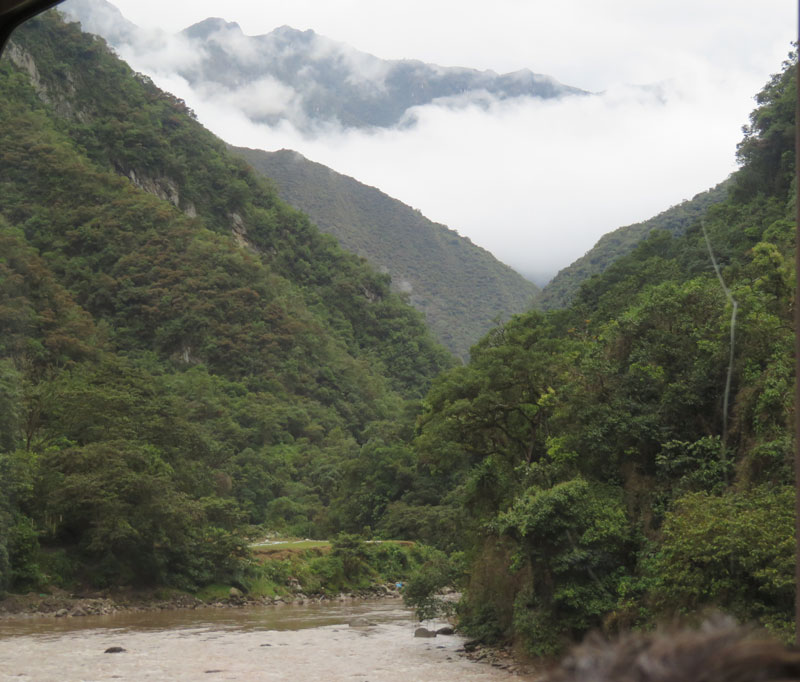
About noon we reached Aguas Calientes and had a buffet lunch at Toto's House Restaurant.
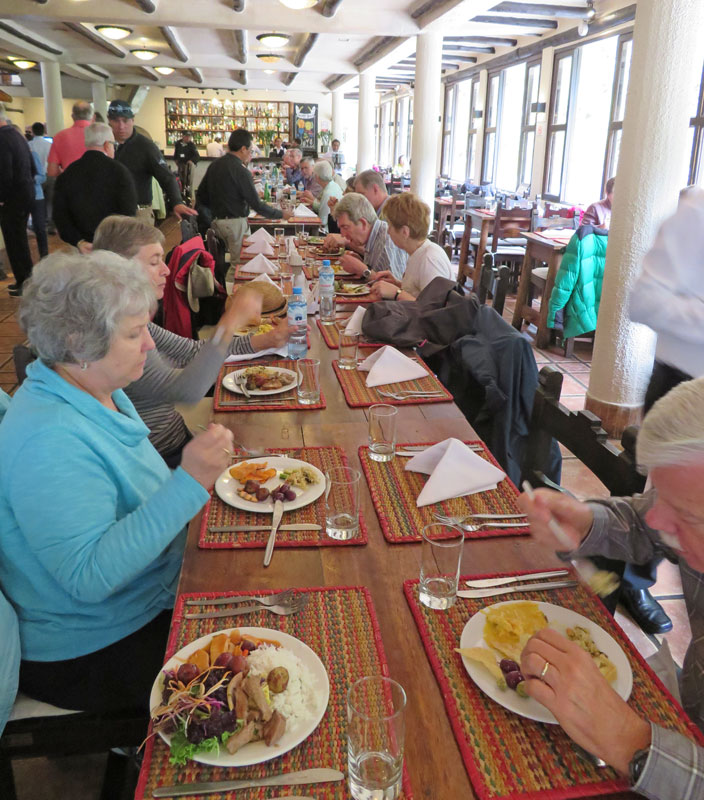
After lunch we crossed the river to meet our bus.
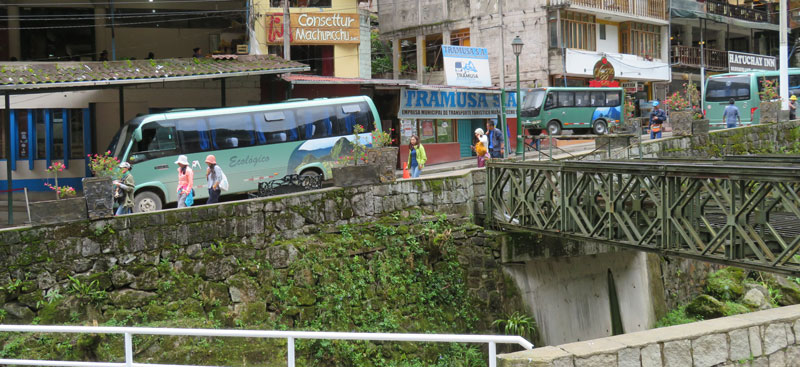
The ride from Aguas Calientes to Machu Picchu is interesting. The altitude gain is about 1,300 feet, from about 6,700 feet to about 8,000 feet, and the road is mostly dirt and rock. It's a continuous switchback road to the top. The drivers make this trip continuously throughout the day, and swinging around a tight turn to meet another bus facing you is nothing new to them.
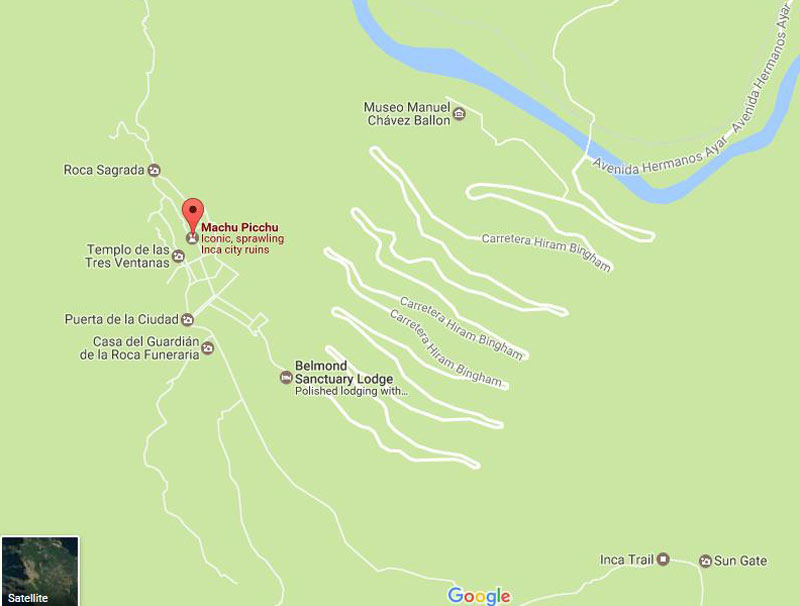
We finally arrived and here's Judy just inside the ticket gates of Machu Picchu.
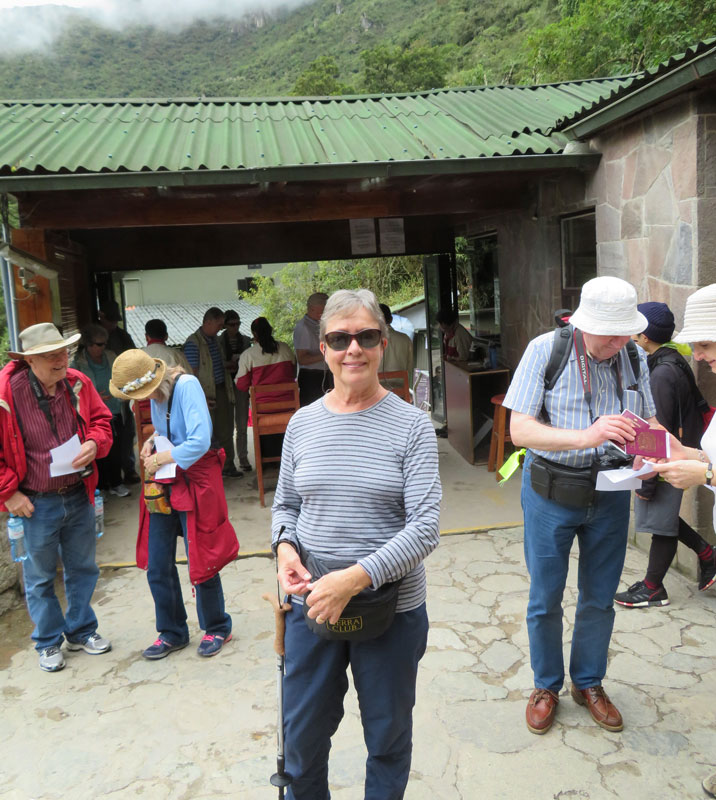
This overview picture of Machu Picchu is taken from the web and shows how steeply the mountain drops off - it's actually that steep on the other side, also. It's difficult to see in this picture, but there are temples and terraces at the top of Huayna Picchu, the 8,835 foot peak in the rear of the ruins (right-top of this picture). There's a trail to the top of that peak but we did not go there. This picture was probably taken from the Machu Picchu peak (10,111 feet). The city sits between the two peaks.
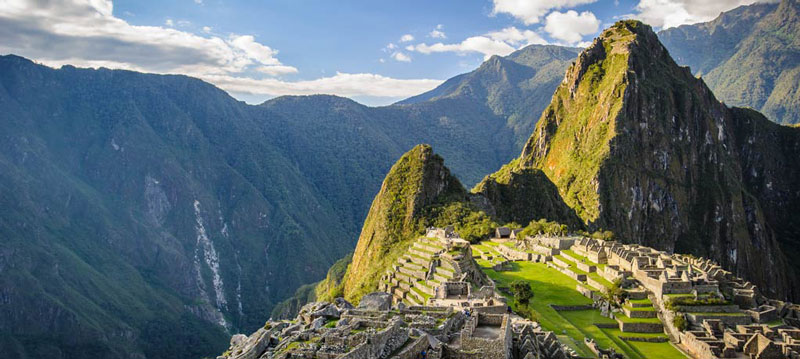
Just for comparison, here's a picture taken in 1912 after the vegetation was removed but before any rebuilding took place. You can see that much of the Machu Picchu we see today was reconstructed since that time. When Hiram Bingham discovered Machu Picchu in 1911, it was overgrown with trees and vegetation
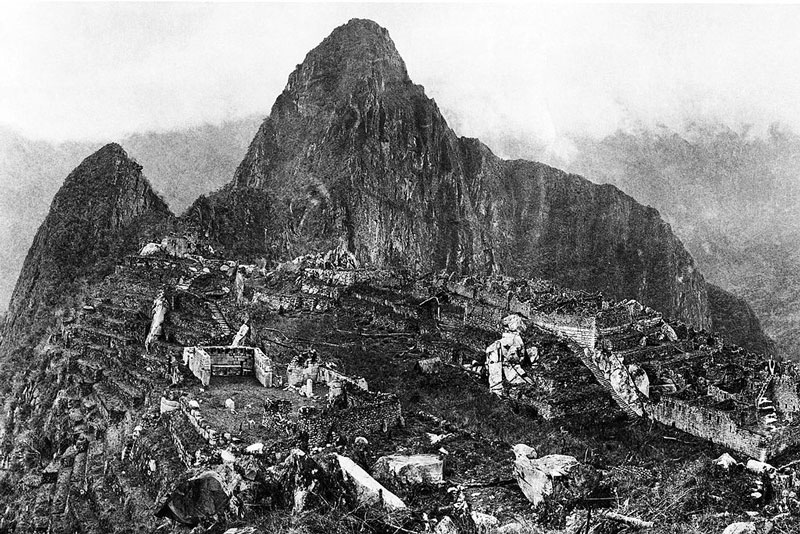
Here's a wider view of Machu Picchu showing how the mountain drops off all around the ruins and how the river loops around the mountain that Machu Picchu sits on.

And just for interest, this picture shows the switchback road that we took to get from Aguas Calientes to Machu Picchu.

Here's Judy on one of the terraces, getting her trekking stick adjusted. After breaking her ankle on a tour in Iceland she really wants to be careful here.
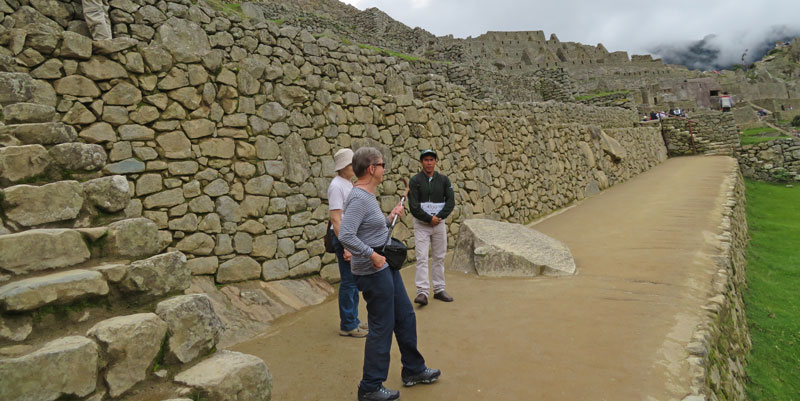
A view from that terrace showing the drop off on this side of the ruins.

Here's a better shot of Judy at Machu Picchu.
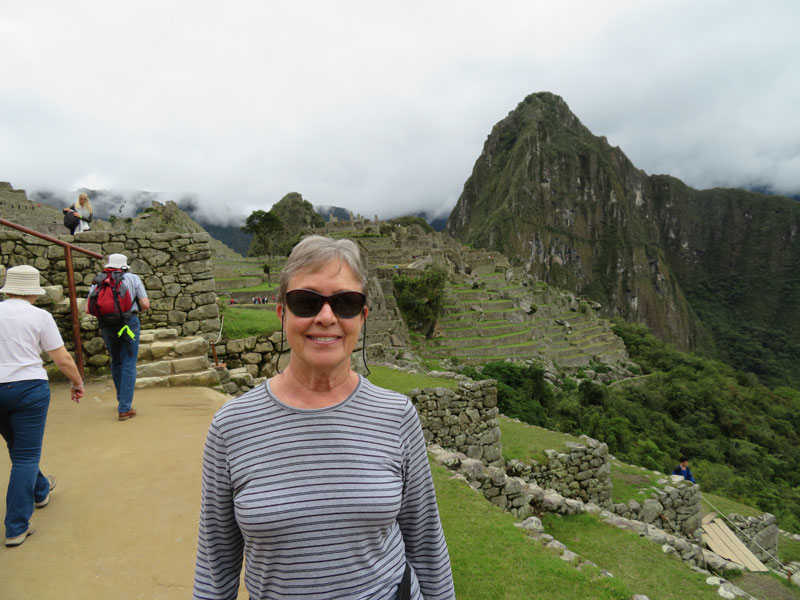
And one of me, just to prove I was there.
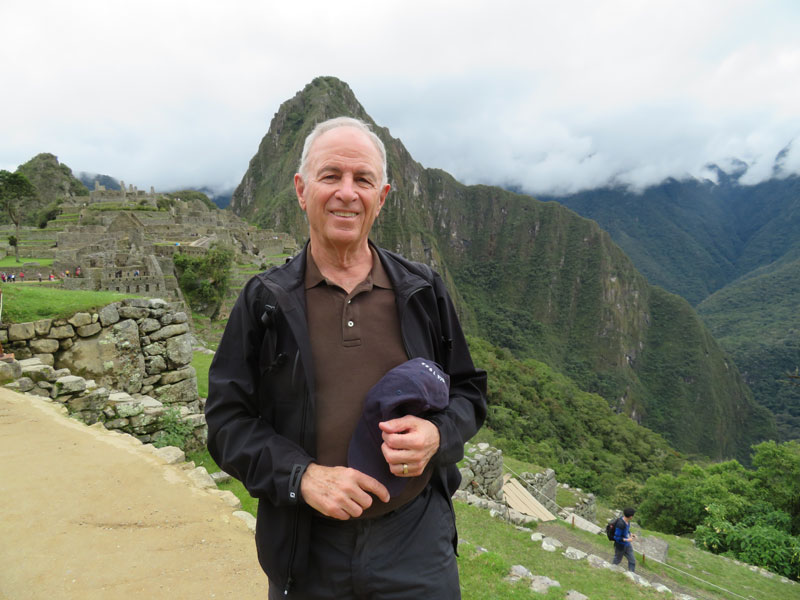
Here's our group at Machu Picchu with our guide talking to us. For a good discussion of the site, see here. There are many places on the Internet that give a detailed description and discussion of its history if you want more information.
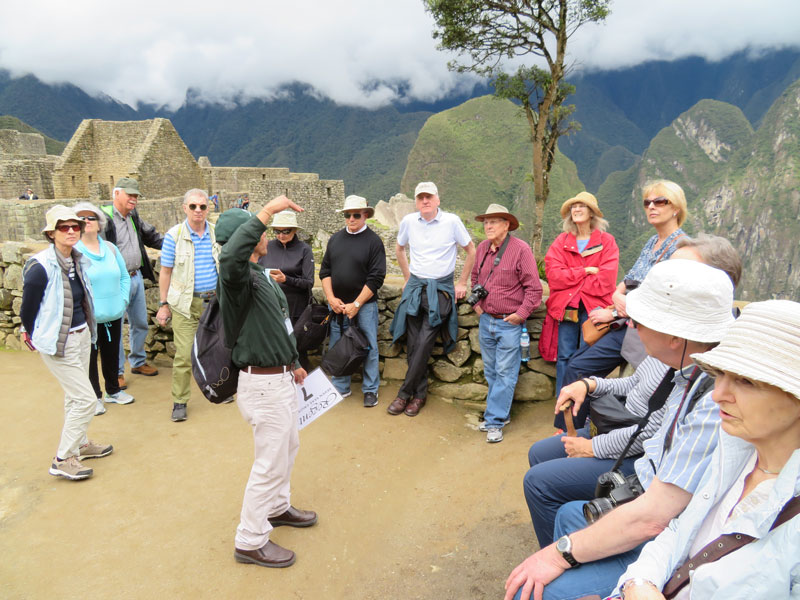
I'm going to put some pictures of things at the site without further explanation.
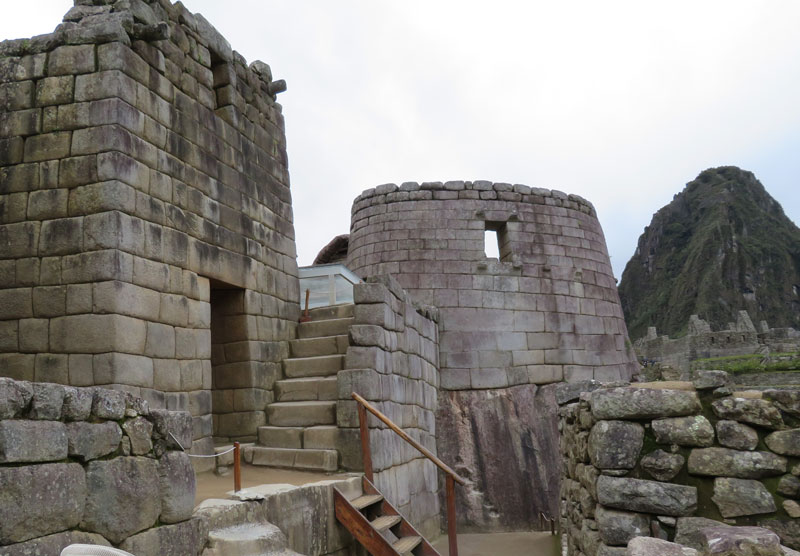
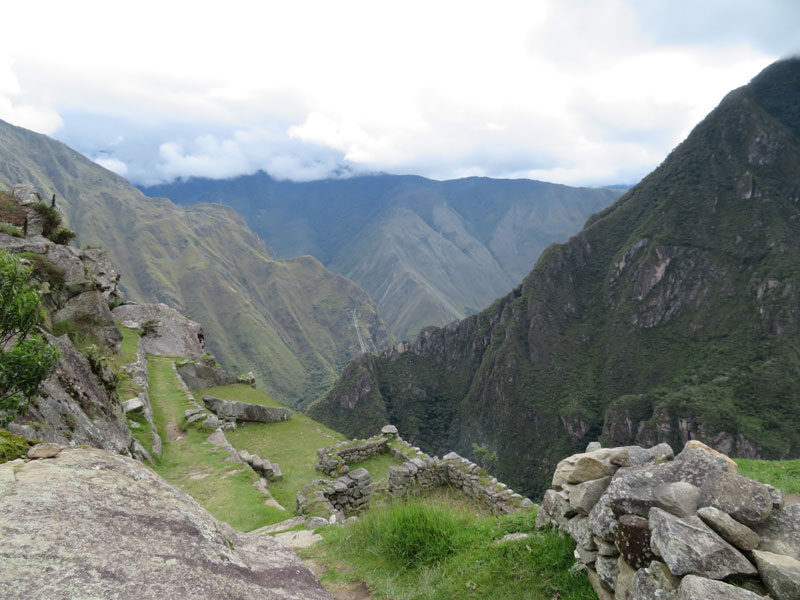
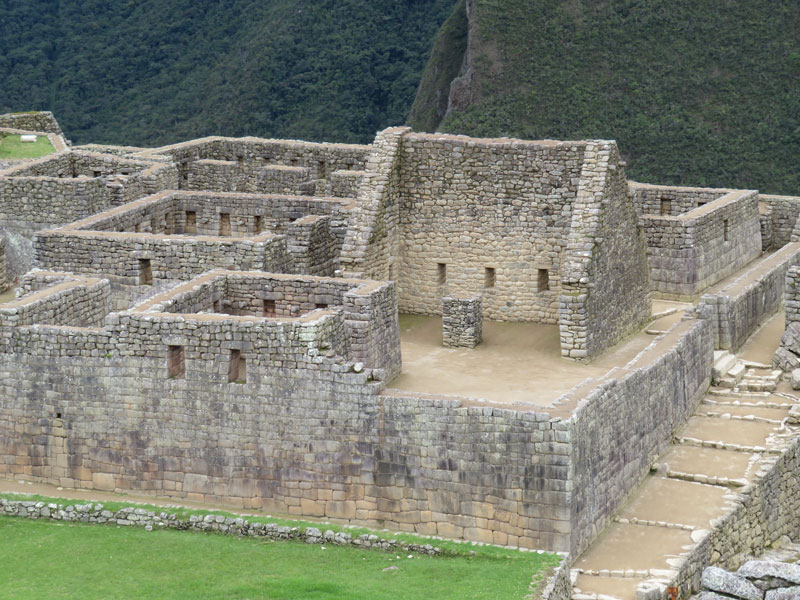
That's the Urubamba River down there. It flows around the mountain that Machu Picchu sits on.
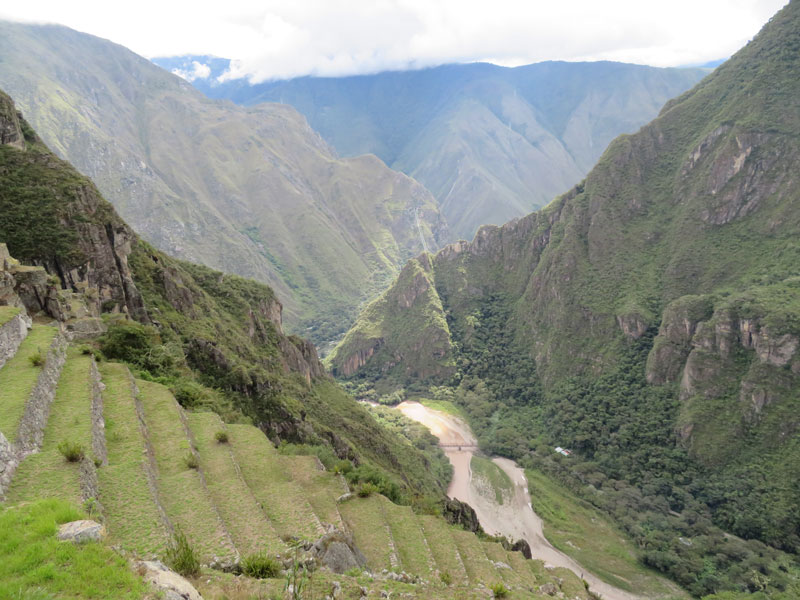
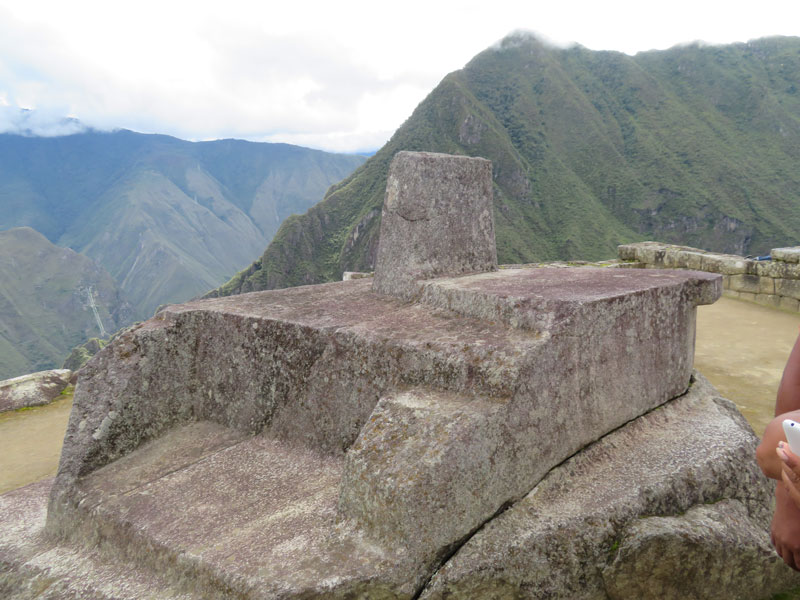
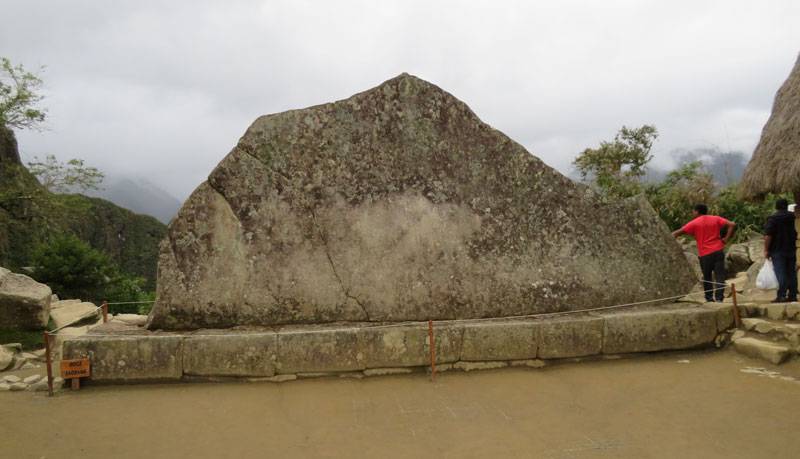
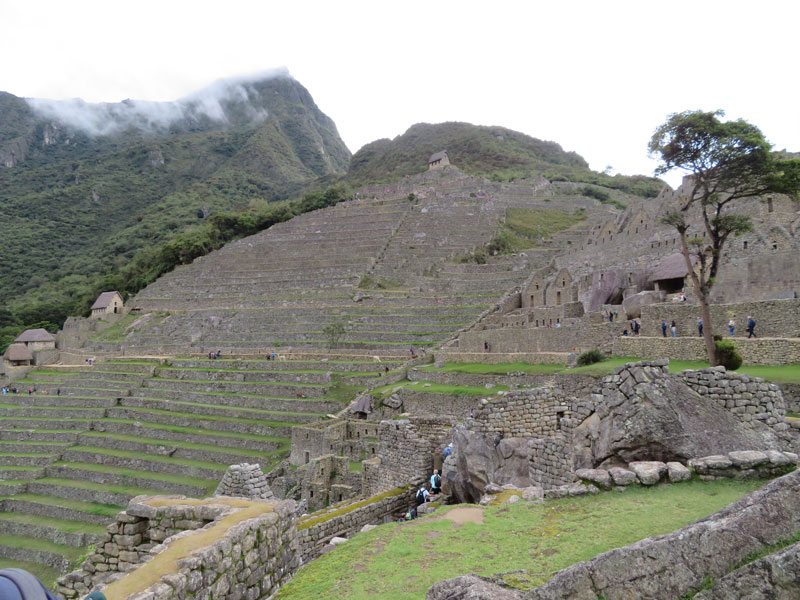
Machu Picchu was never discovered by the Spanish so it was not looted or destroyed. It was built about 1450 and was only occupied for about 100 years. After the Spanish conquered the Inca Empire it appears that Machu Picchu was abandoned.
One intriguing question is "Why was Machu Picchu built?" While its position on top of a mountain would make it hard to attack, it is not in a strategic location. The best speculation I've read is that it was built as a residence for the king because there was an insect borne disease in the lower lands and those insect(s) did not exist at the altitude (about 8,000 feet) of Machu Picchu. So Machu Picchu was a healthier place to live than the lowlands.
We had only a limited time in Machu Picchu. Our return to Cusco was the reverse of our route and would take four or more hours, so we eventually departed and got on the bus to Aguas Calientes, down the switchback road.
Encountering another bus coming up the narrow road was interesting.
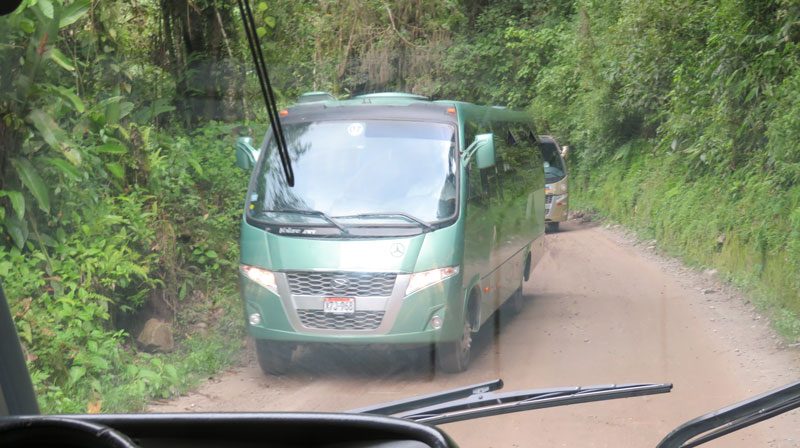
But we arrived safely at Aguas Calientes and our train was arriving at the station.
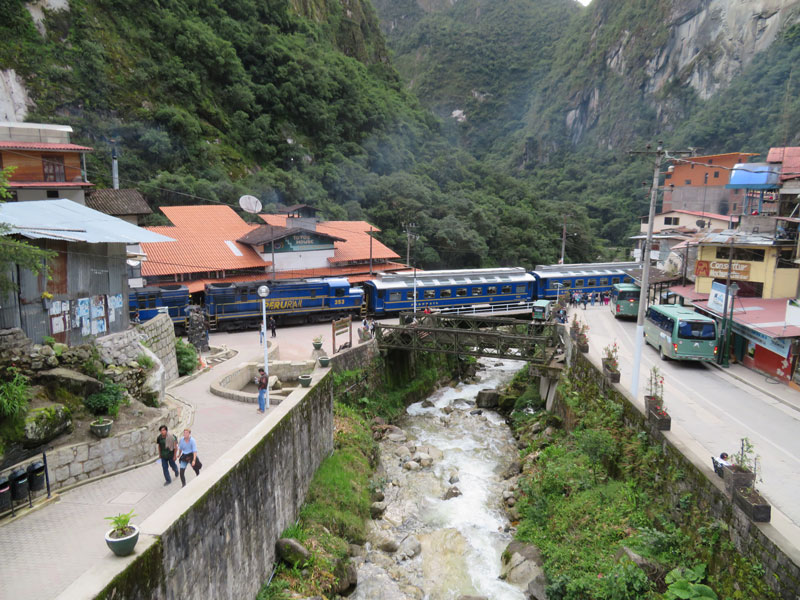
On the train ride back, one of the cabin crew dressed as an Inca demon and entertained us. The other two crew members put on a fashion show.
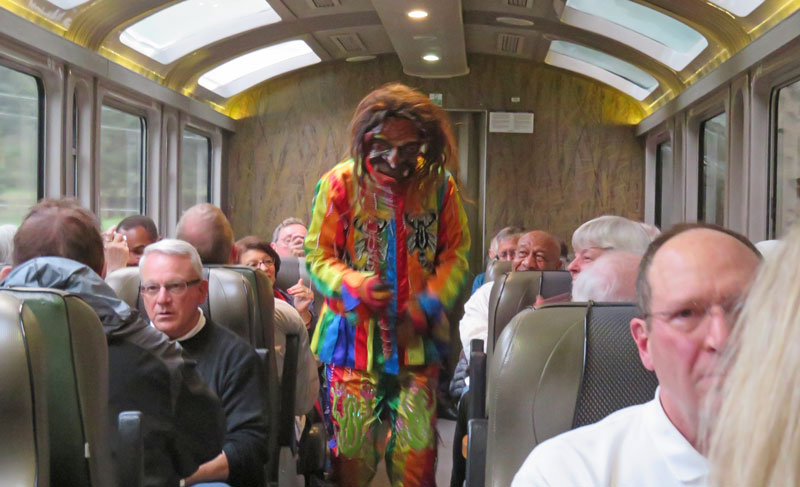
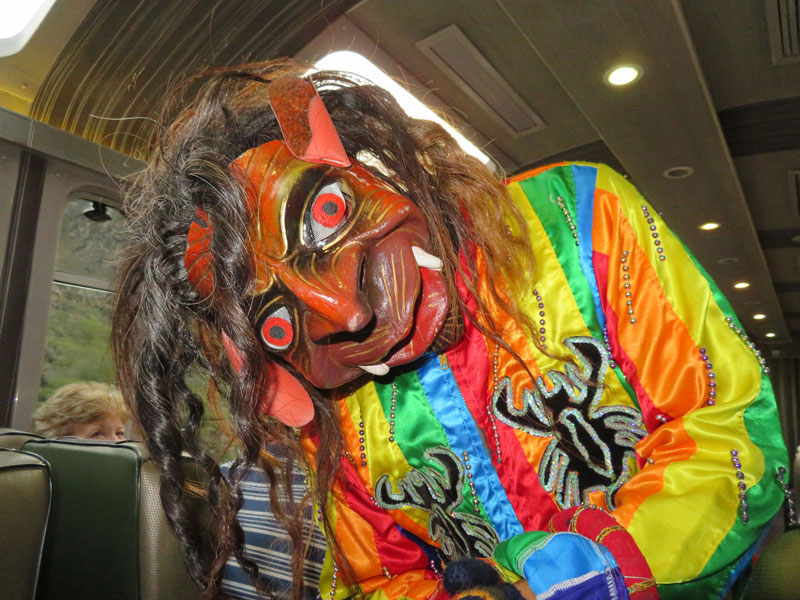
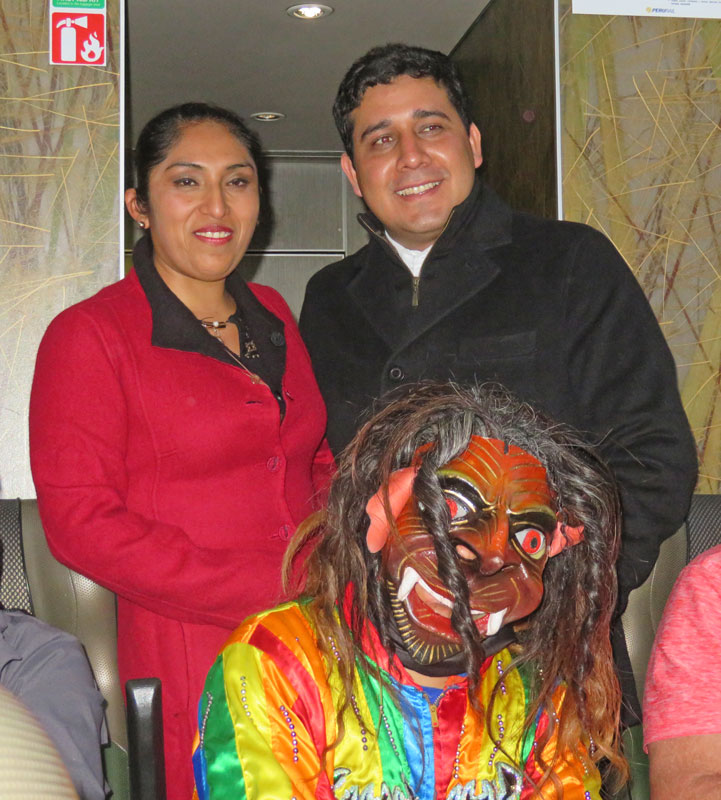
The rest of our trip back to the hotel was uneventful and we arrived at the hotel a bit after 9pm - long day.
+++++++++++++++++++++++++++++++++++++++++++
2/4/2017 (Saturday) Today we fly back to Lima and join the ship. We didn't have to meet in the lobby until 10am so we actually got to sleep a bit late. As we left the hotel, Judy encountered some girls with a lamb and wanted to help them. So we have another set of pictures of her with a baby animal.
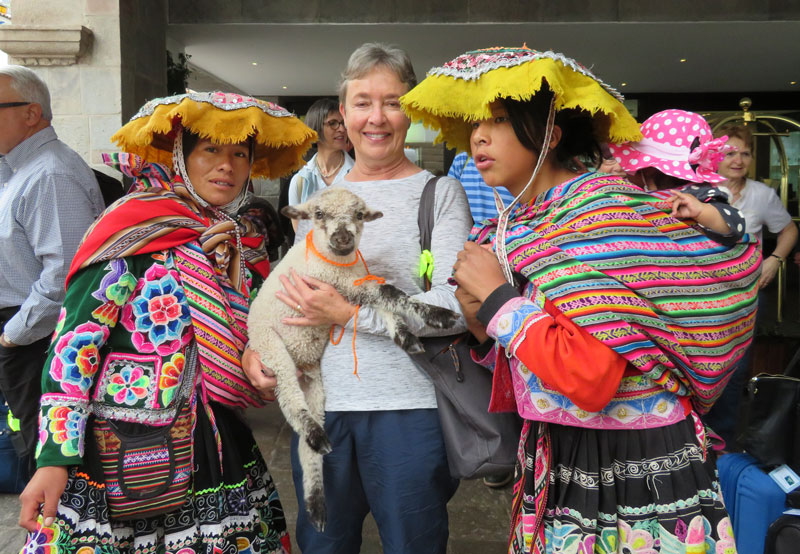
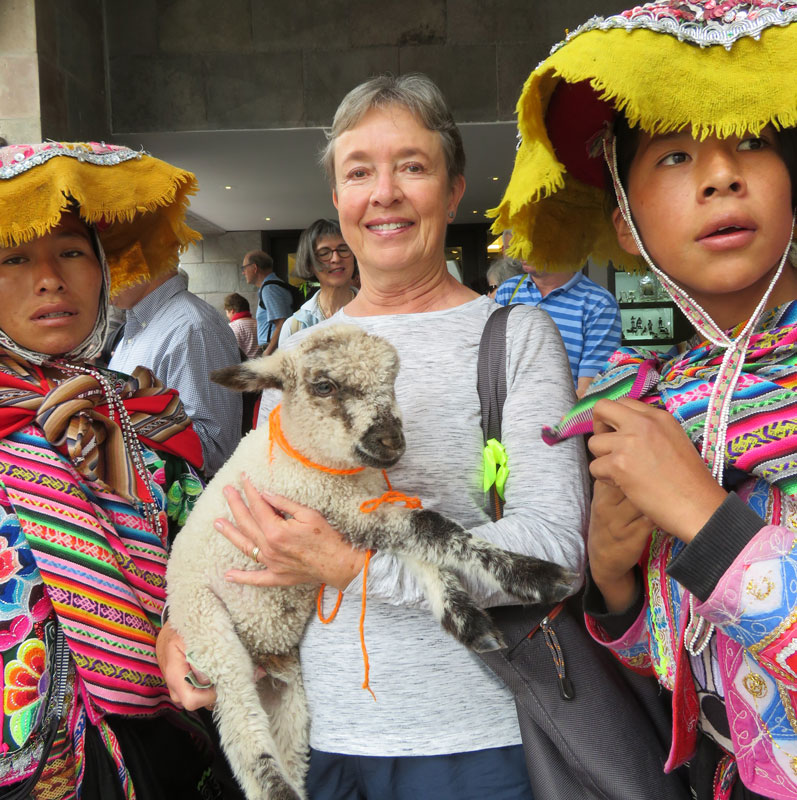
The bus took us to the Cusco airport and we checked in for our flight to Lima.
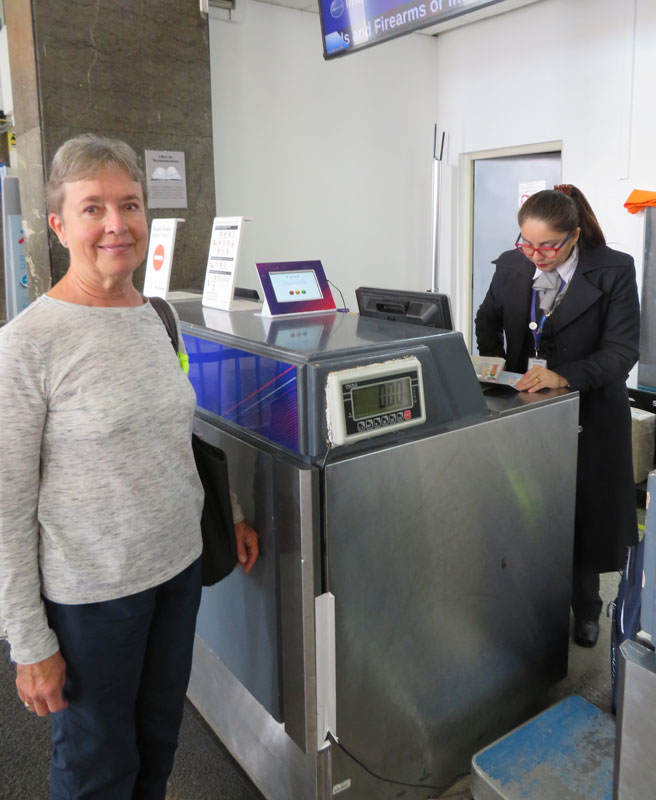
We had a fairly long wait for our flight. Here's Judy with some friends from the Machu Picchu tour. The couple on the left are from Germany and the woman on the right is from Portugal.
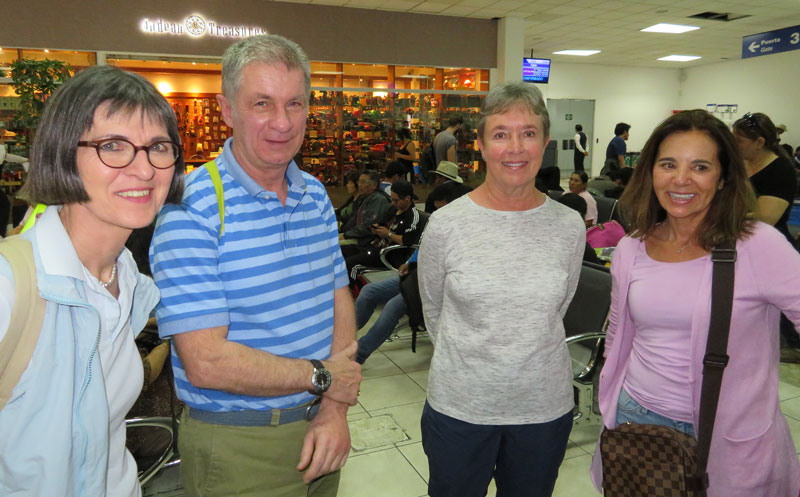
But finally we got loaded - Airbus A-320.
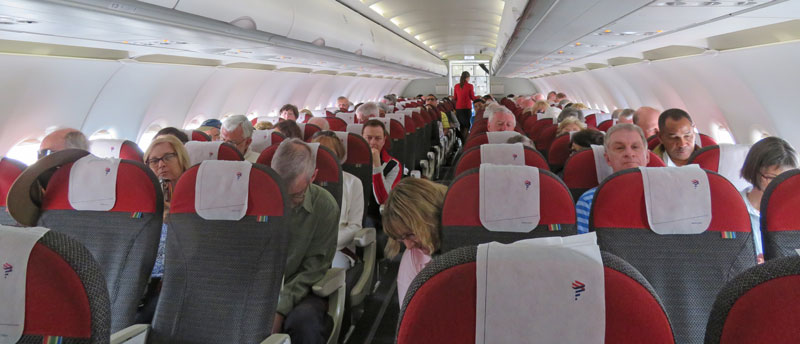
And we're off.
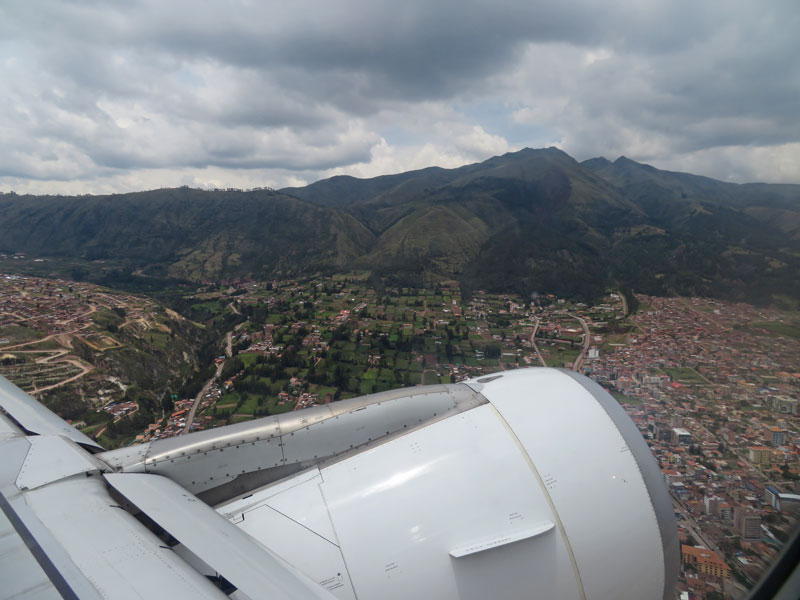
Upon arrival in Lima we collected our bags and loaded into a bus which would take us to the ship.
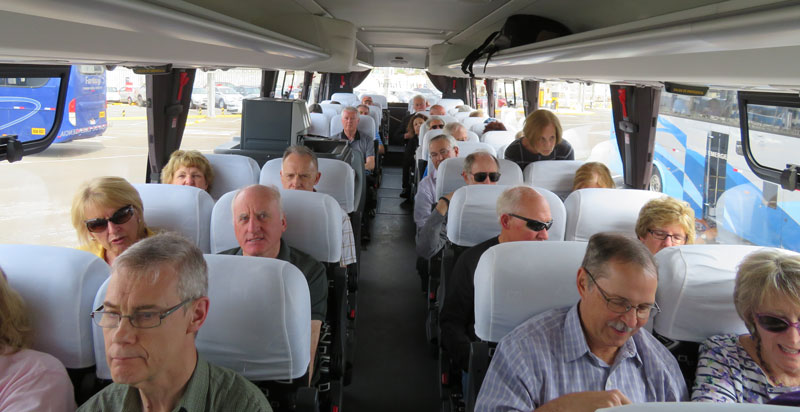
Our ship, the Regent Seven Seas Mariner, was waiting for us at the port.
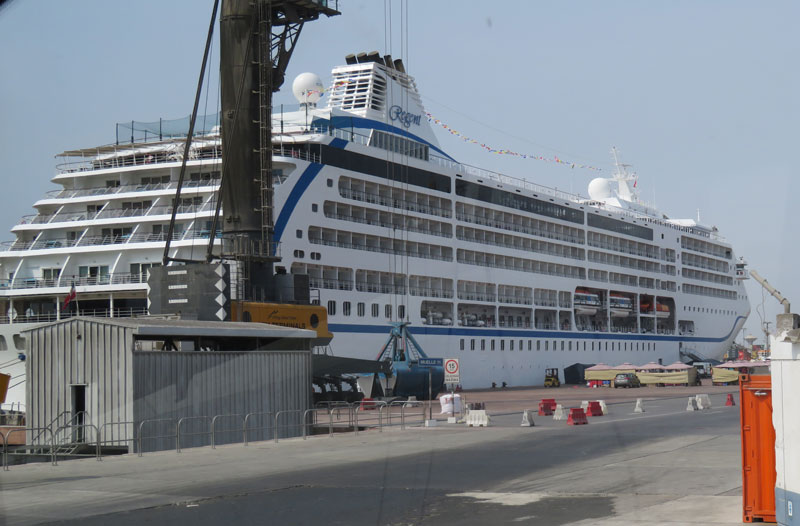
We were able to check in quickly and our luggage was at the room. We're in cabin 1026, a Concierge-D Suite. It's a fair sized room, as you can see here. There's a sitting room off the bedroom area and a veranda beyond the sliding doors. We're on the tenth deck.
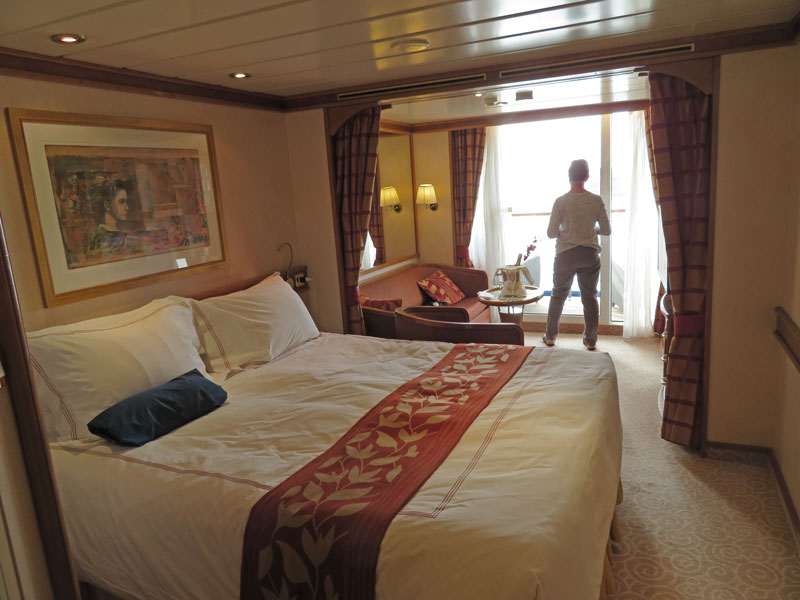
Here's a view from the veranda area looking back into the room. Note the door in the rear center of the picture. That's a walk-in closet! Whoever heard of a walk-in closet on a ship?
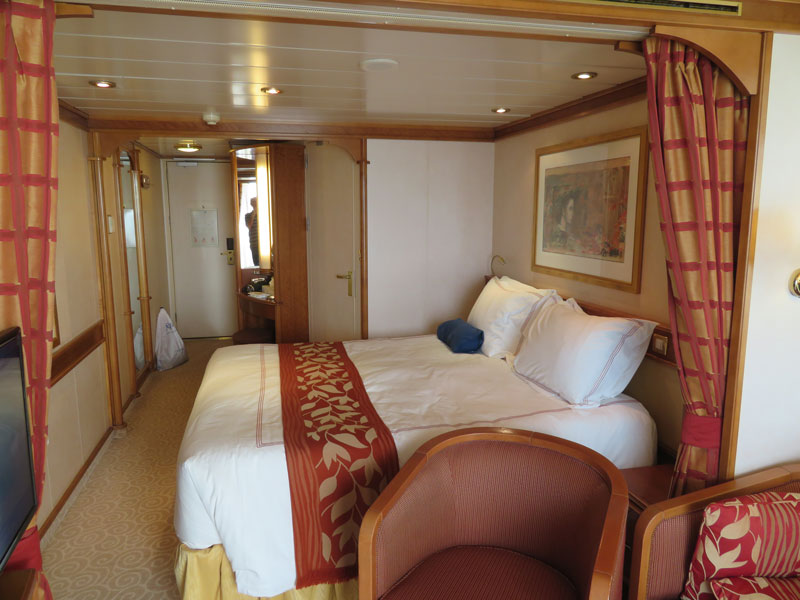
Looking into the closet.
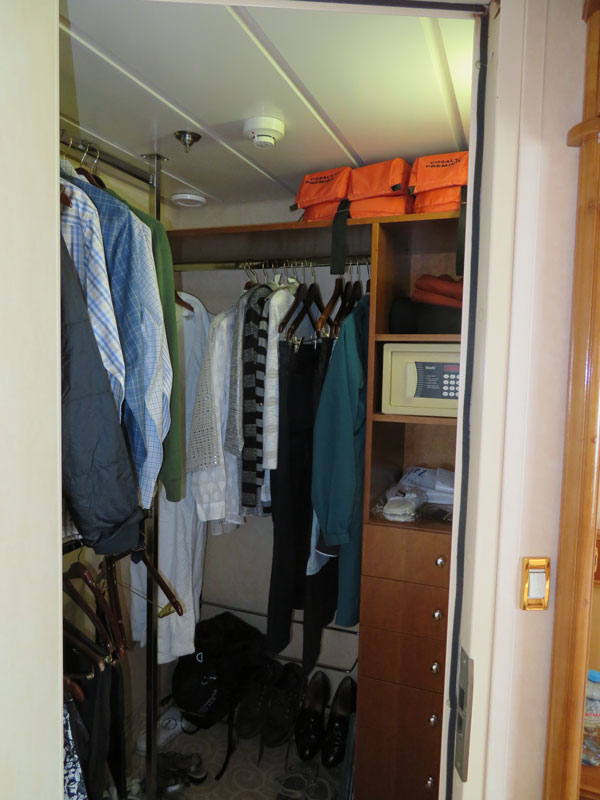
Then it was time for our safety drill.
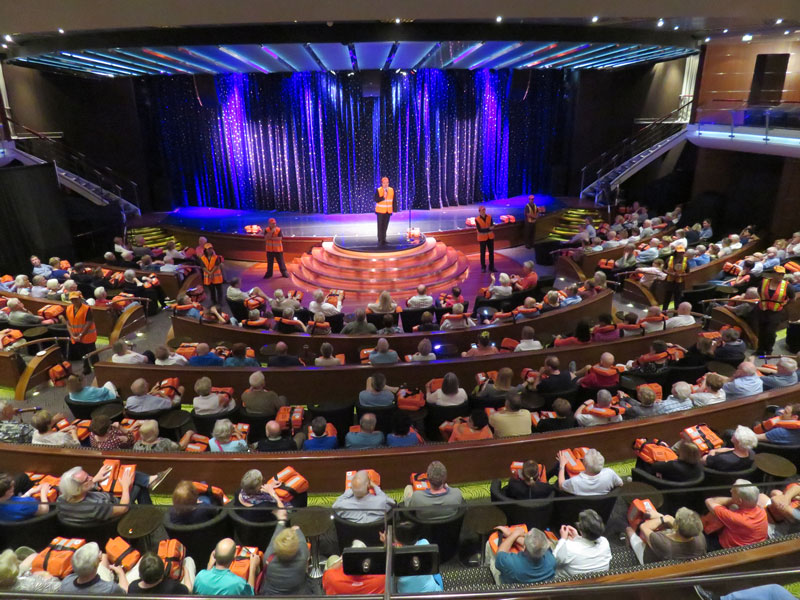
Here Judy is modeling the latest in float-wear.
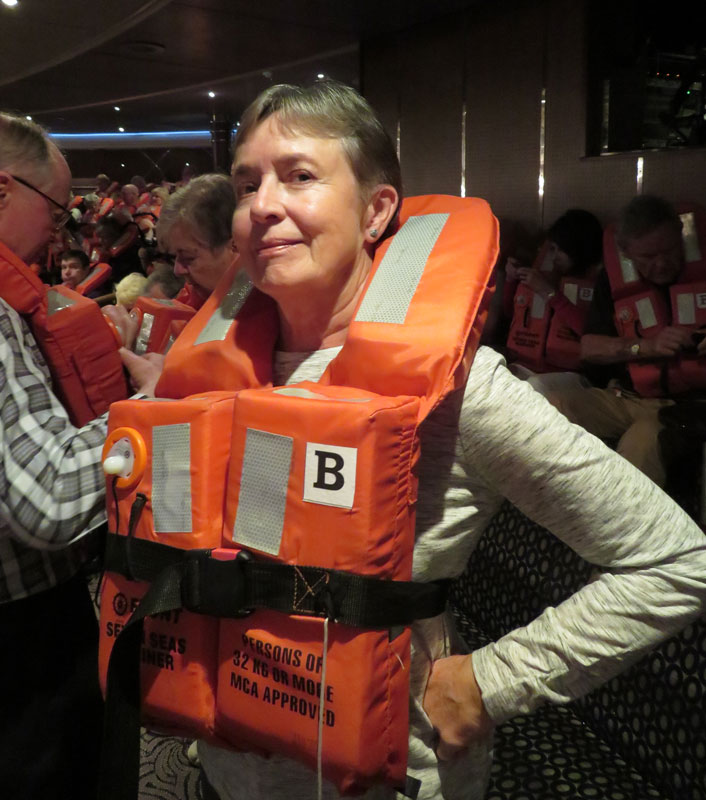
After the drill we sailed away into the sunset. It was a windy day.
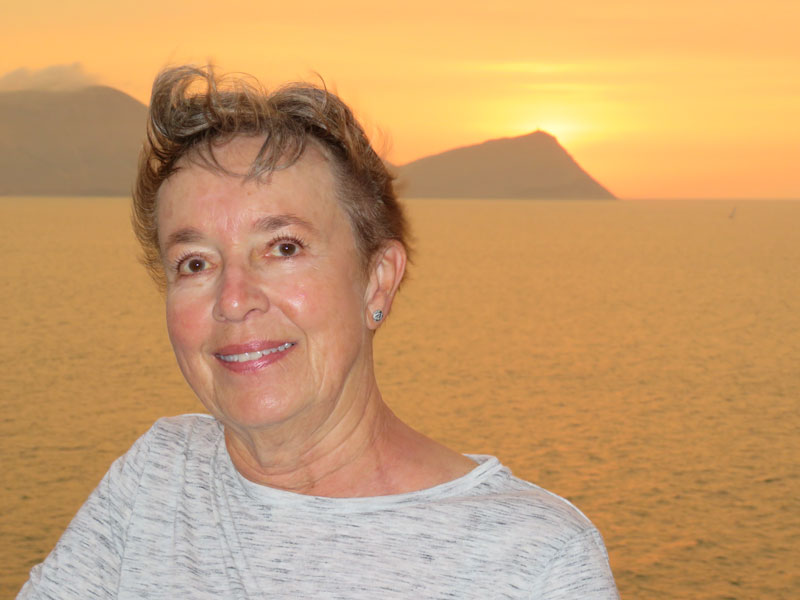
Tomorrow is a big day. We arrive at Pisco and take a flight to see the Nazca lines.